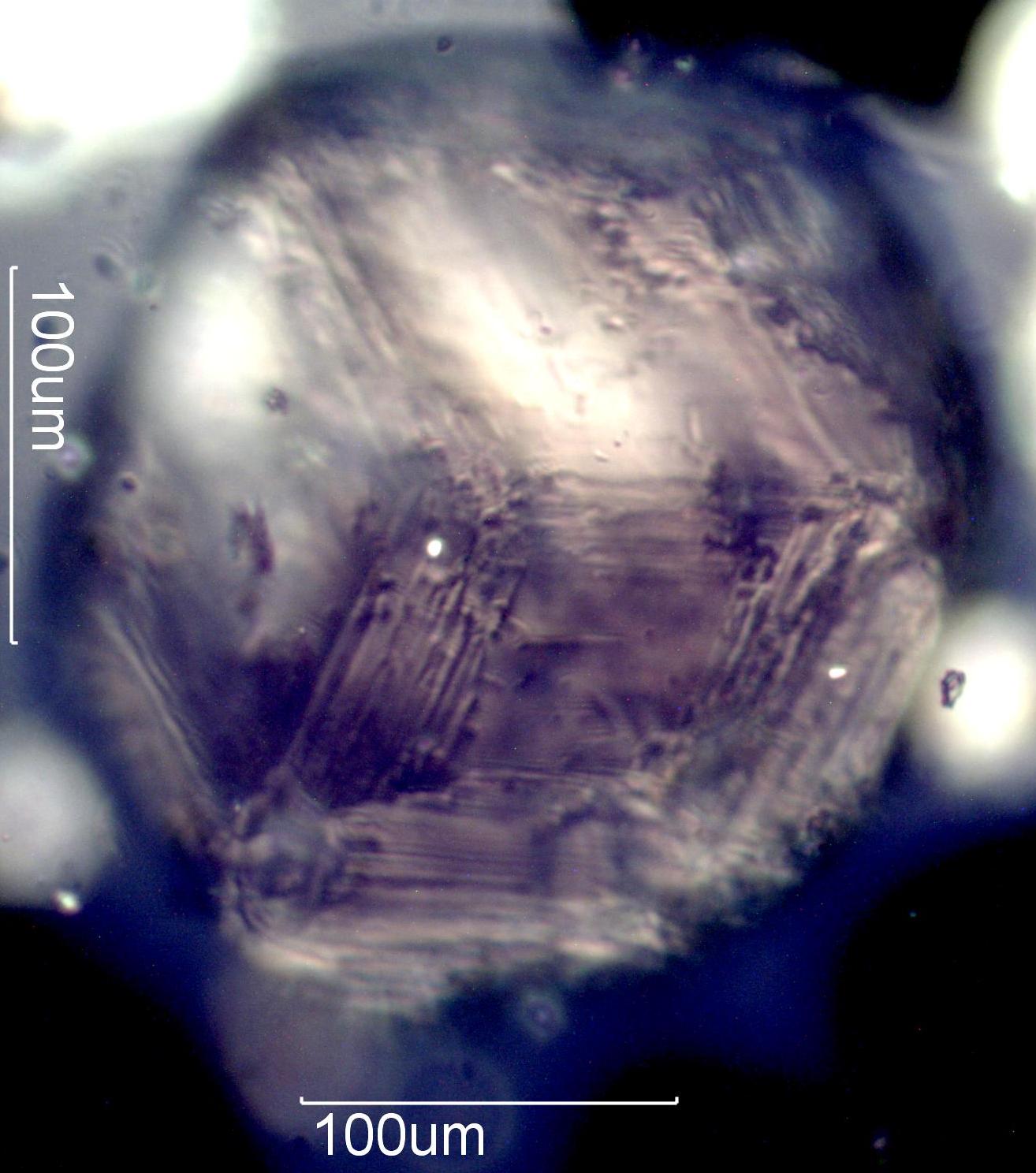Black Sand, Arroyo in Santa Fe, New Mexico, Under the Microscope
This photograph brings out the rhombdehdral shape of the twelve faces on this garnet, three of which are clearly evident here.
Definition/Function:
Black sand deposits are generally density and mass separated sand grains. They are the result of fluid flow over the sand that removes the lighter sand grains. The lighter sand grains may be smaller grains or grains that have a lower density than the other grains. Drag plays a role in the size segregation so the larger grains tend to be missing as a result of their lower drag; they being deposited earlier in the sedimentation process or not being transported to this location by the flow of the fluid. The result is that black sands typically mark concentrations of sand grains with high density. Magnetite, with a density of about 5.5 grams per cubic centimeter, is generally the most common mineral but many other beautiful minerals collect with the magnetite. This includes zircons, garnets, olivines, tourmalines, hornblendes, rutile, and many others, too many to list here. The fluid responsible for these deposits may be either air or water. They are most common as a result of water flow.Significance in the Environment:
"Petrologic and experimental evidence for the etching of garnets by organic acids in the Upper Jurassic Morrison Formation, northwestern New Mexico"
Paula L. Hansley
DOI: 10.1306/212F8BCF-2B24-11D7-8648000102C1865D Published on July 1987, First Published on July 01, 1987
Abstract
The upper Jurassic Morrison Formation in the southern part of the San Juan Basin contains uniquely etched detrital garnets characterized by smooth, crystallographically controlled faceted surfaces. The etched garnets occur in relatively homogeneous Morrison sandstones in discrete stratigraphic zones that are bounded above and below by sandstones bearing unetched garnets. Diagenetic alterations associated with etched garnets include etched staurolite, skeletal plagioclase, regularly interstratified illite-smectite, iron-rich chlorite, ankerite, albite, diagenetically altered (organic-poor) uranium ore, and extensive secondary porosity. Etching of garnets and partial to complete dissolution of other aluminosilicate minerals were caused by high concentrations of organic acids generated during the maturation of epigenetic organic matter (predominantly type-III kerogen) in the Morrison Formation. The presence of authigenic phases that form near 100 degrees C indicates that temperatures were high enough during diagenesis to cause the thermal degradation of kerogen. The subsequent release of reactive organic acids promoted a variety of water-rock reactions. This hypothesis was corroborated by experiments in which dicarboxylic acid solutions created facets on garnets identical to those developed on naturally etched Morrison garnets. The excellent complexing ability of organic acid anions accounts for the characteristic lack of alteration products on etched surfaces.


